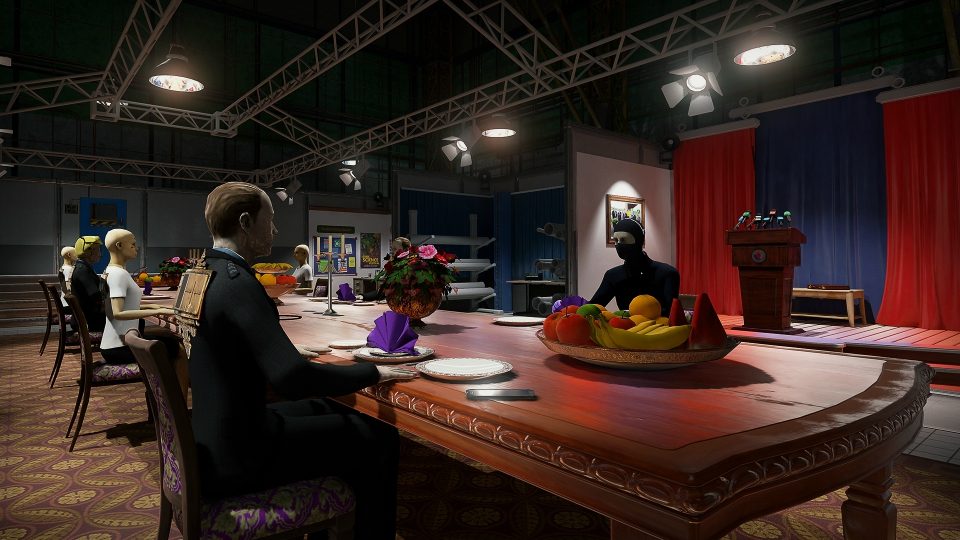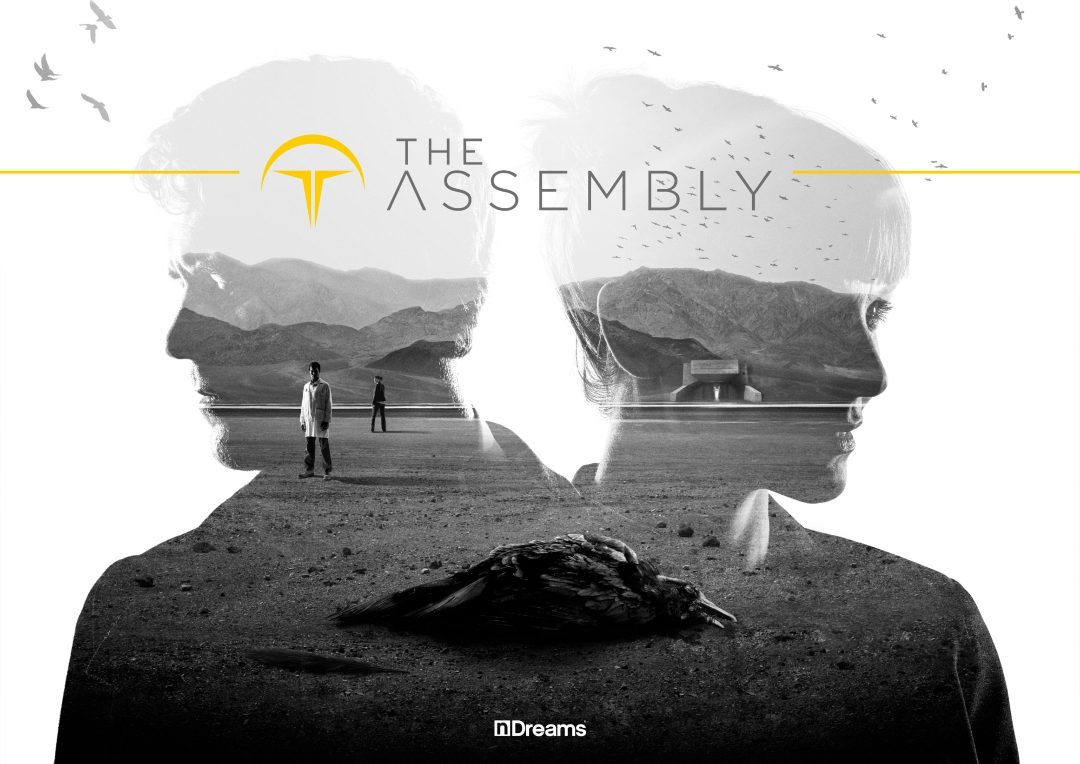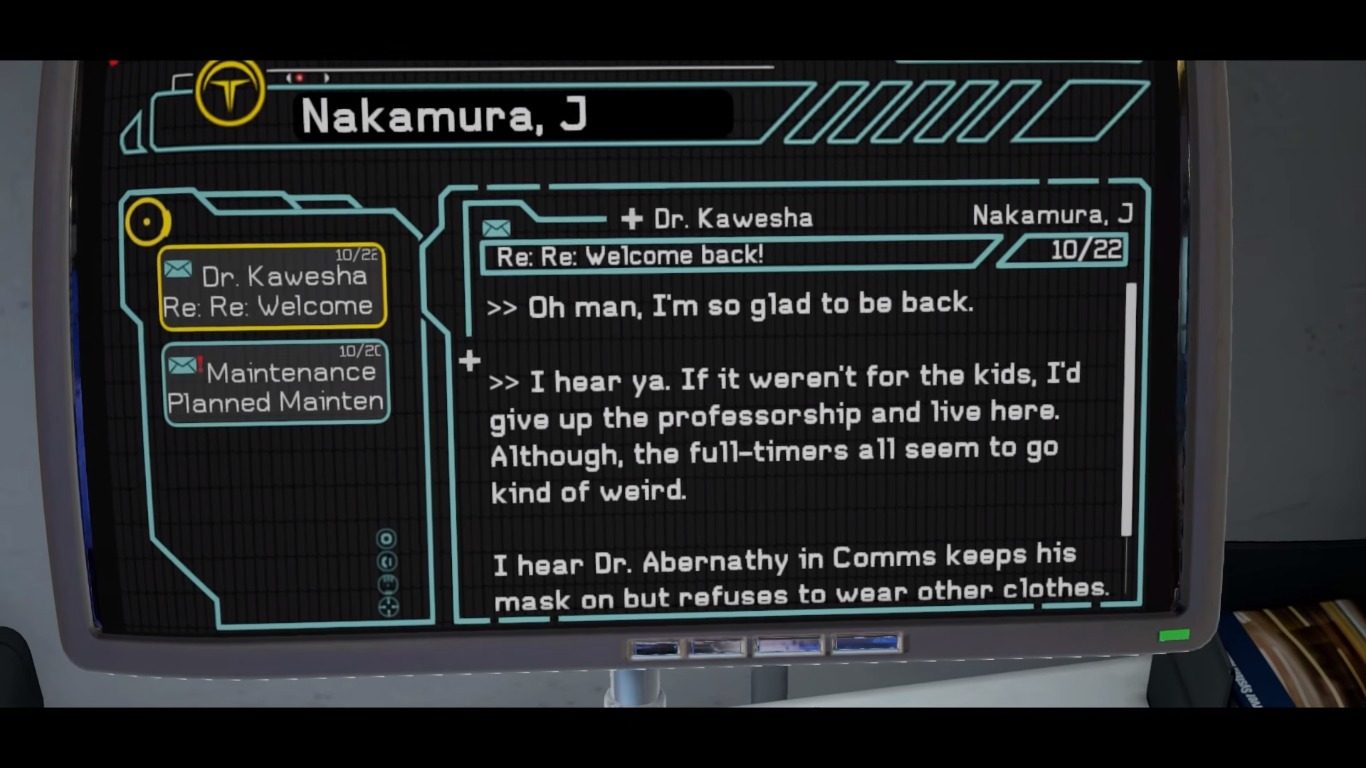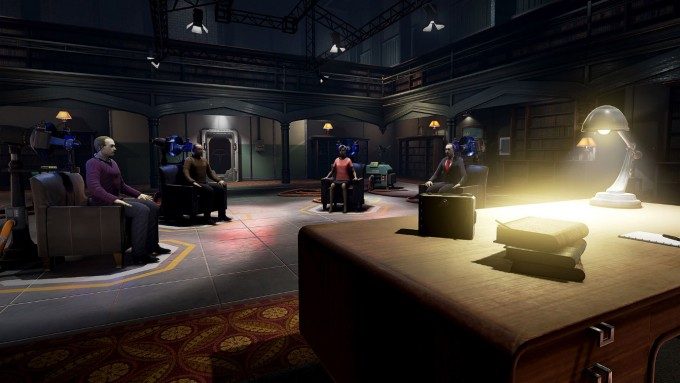The Assembly is a first-person adventure game that wants to put your moral fiber to the test. Much like a novel, the game alternates back and forth between two characters: a brilliant neurologist entering the shadowy research institute eponymously dubbed ‘The Assembly’, and an equally brilliant virologist trying to get out. As both characters, you come to better understand why the mysterious organization was driven to the shadows, and why it should probably stay there.
The Assembly Details:
Official Site
Developer: nDreams
Publisher: nDreams
Available On: Steam (Vive, Rift), Oculus Home (Rift)
Reviewed On: HTC Vive with Xbox gamepad
Release Date: July 19th, 2016
Drugged up and wheeled in through the front door of a bunker-like complex in the Nevada desert, you learn that you’ve been unceremoniously jumped into a gang of scientists. Your name is Madeleine Stone, a disgraced neuroscientist with a complicated past. Before you can decide whether you want in or out of the underground institute, you must complete a number of puzzles, or what The Assembly calls ‘trials’.
On the other end of the complex, you now find yourself at your desk as Cal Pearson, a morally conflicted virologist who discovers that The Assembly (the organization) might just be crossing a boundary when it comes to its research into a new lab-engineered avian flu. You’re getting out, but it’s tougher than you thought.
Cal represents the classic adventurer who must weave the story through finding items and connecting the dots to uncover a scandal that may have global consequences.
Gameplay
The Assembly is high on both style and polish, and even features some reasonably good voice acting (everything but the opening sequence, that is). Despite some issues with the scale of some in-game objects, The Assembly offers a surprisingly realistic and intensely human look at the nature of the world, especially for a game that has so little face-to-face character interaction.
And if that’s more than you’ve bargained for, stop here. Because while the puzzles are interesting, and make a refreshing departure from the standard ‘match the obvious symbols and carry on’ of some other games, you’ll need to confront yourself by completing a number of moral tasks, some optional and some integral to the storyline.

A good chunk of the game, namely with adventurer Cal Pearson, is an introspective adventure with adult themes that on first blush may seem more like a list of tasks than a game itself, so if you breeze by without really interfacing with The Assembly’s emotional content, you might feel belabored with minutia if you weren’t expecting to play a Gone Home (2013) style adventure. There are of course a number of interesting puzzles that will keep you racking your brain, some of which are remarkably clever and rewarding to complete.
 Through both characters, The Assembly challenges you by asking you some pretty hard-hitting questions for a video game, like ‘how comfortable do you feel doing morally dubious research to further a good cause?’ and ‘would you kill a bird? A cute puppy? How about a human being?’ Also, ‘do you like reading through countless emails to further the story line?’ Because you better read everything, look at everything, listen to every voice recording, and open every drawer if you want to move forward.
Through both characters, The Assembly challenges you by asking you some pretty hard-hitting questions for a video game, like ‘how comfortable do you feel doing morally dubious research to further a good cause?’ and ‘would you kill a bird? A cute puppy? How about a human being?’ Also, ‘do you like reading through countless emails to further the story line?’ Because you better read everything, look at everything, listen to every voice recording, and open every drawer if you want to move forward.
This is where my gameplay session infringed upon immersion.
Immersion
I have no problem rummaging through every cabinet, drawer or crevice in a game. In fact, after hundreds of hours between Skyrim (2011) and the Fallout series, I’m pretty good at it by now. But emails, or any written text for that matter, are different from in-game objects in the sense that they can give you hints or even plainly written directions, but they aren’t useful outside of their contents. So if you can figure out the objective ahead of you without any help from in-game text, you shouldn’t be required to read the email in order to progress.
I can barely be asked to read all of my own emails in the real world, let alone someone else’s email in a virtual world, so when a single unread email stopped my progress through the game for a good 30 minutes, I was a little peeved. After systematically looking through every office and lab on the floor, I found it (with no help from the protagonist) sandwiched between two non-plot related emails on a colleague’s terminal. Before my show-stopping quest, I was actually in the right place, with the right in-game objects, and with the right intent, but because I didn’t look at one lousy email spelling out the task, I was prevented from going forward.
In its defense, The Assembly actually does a pretty great job of giving you hints if you screw up a passcode too many times, or are headed to the wrong elevator, so I don’t expect this to happen to everyone. You might be the type that dutifully clicks on every email and have everything else line up as it should, but if you’re not, consider this fair warning.
Comfort
There are a number of comfort modes available to users, and because this is ideally a seated experience that relies on keyboard and mouse or gamepad—which can render first-person VR movement rather uncomfortable—the most useful way to get around is teleporting. For those wondering, The Assembly has no Vive controller support.
[gfycat data_id=”BlissfulRectangularGorilla”]
The default mode projects a ghostly figure at a configurable distance, and combines it with a short-distance blink teleportation that inches you forward one footstep at a time. Because going a foot at a time is a slow and repetitive process, you tend to use ghost teleportation much more often, reserving the short-distance blinking for minor adjustments.
‘Snap-turn’ is also available at a fixed rotation of 90 degrees, which allows you to quickly turn around and go down the institute’s many hallways easily. Some people aren’t keen on comfort-mode controls, so it was nice to see that more options are available.
In the settings menu, you can revert to regular joystick controls that allow you to pan left and right using the right stick on your controller, and moving forward smoothly at a number of available speeds. All warnings apply, this is only really good if you’re either used to it, or not bothered by what Oculus CTO John Carmack famously called “yaw-stick poison.”
That said, I found it to be an immensely comfortable experience that was obviously designed from the ground-up for VR.
Despite flailing around with emails, I found myself genuinely invested in the outcome, and challenged by both the puzzles and the moral quandaries set before me. I don’t know how much replay value there really is in this 4-5 hour adventure, but there seems to be enough ancillary door locks, computer passcodes and objects that even the most thorough player can miss and still make it to the end. There’s also an alternate ending made accessible by accessing the game’s chapter-by-chapter breakdown once you’ve beaten the game one time through.
 We partnered with AVA Direct to create the Exemplar Ultimate, our high-end VR hardware reference point against which we perform our tests and reviews. Exemplar is designed to push virtual reality experiences above and beyond what’s possible with systems built to lesser recommended VR specifications.
We partnered with AVA Direct to create the Exemplar Ultimate, our high-end VR hardware reference point against which we perform our tests and reviews. Exemplar is designed to push virtual reality experiences above and beyond what’s possible with systems built to lesser recommended VR specifications.









